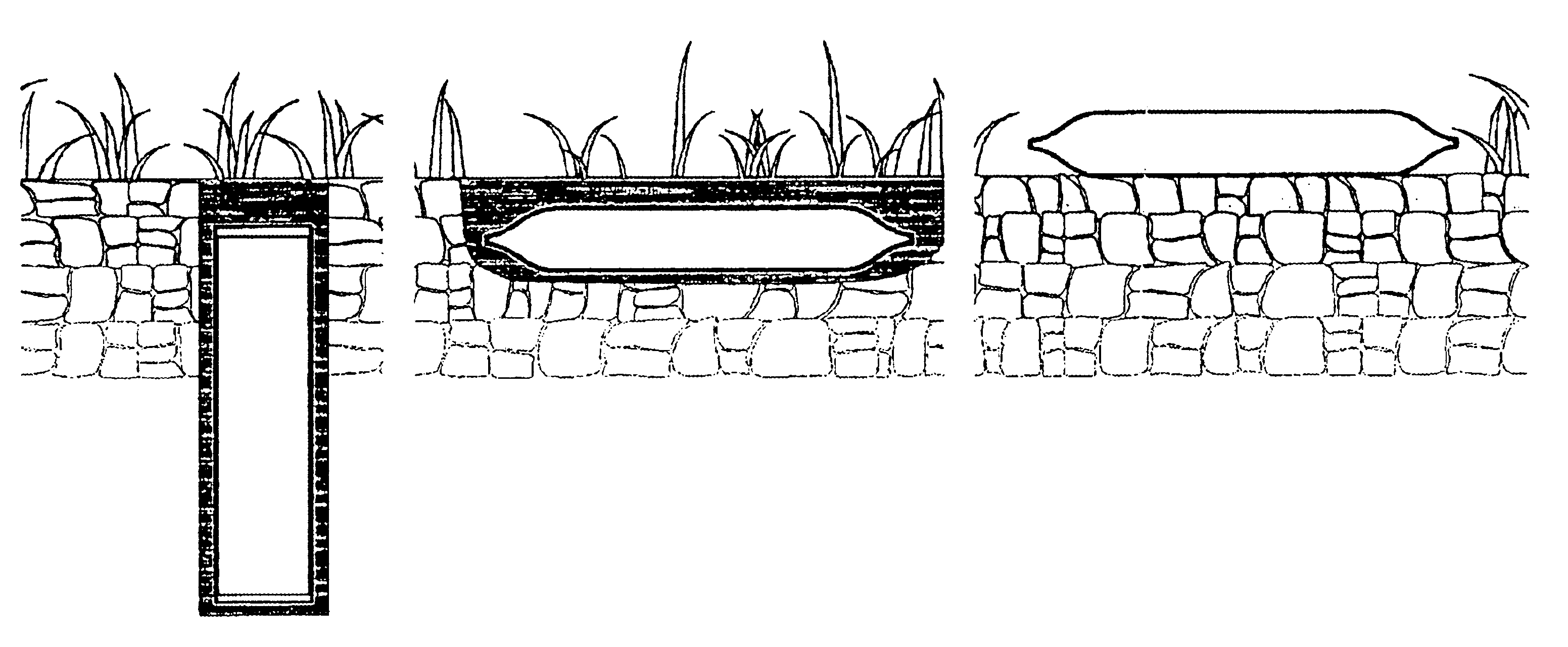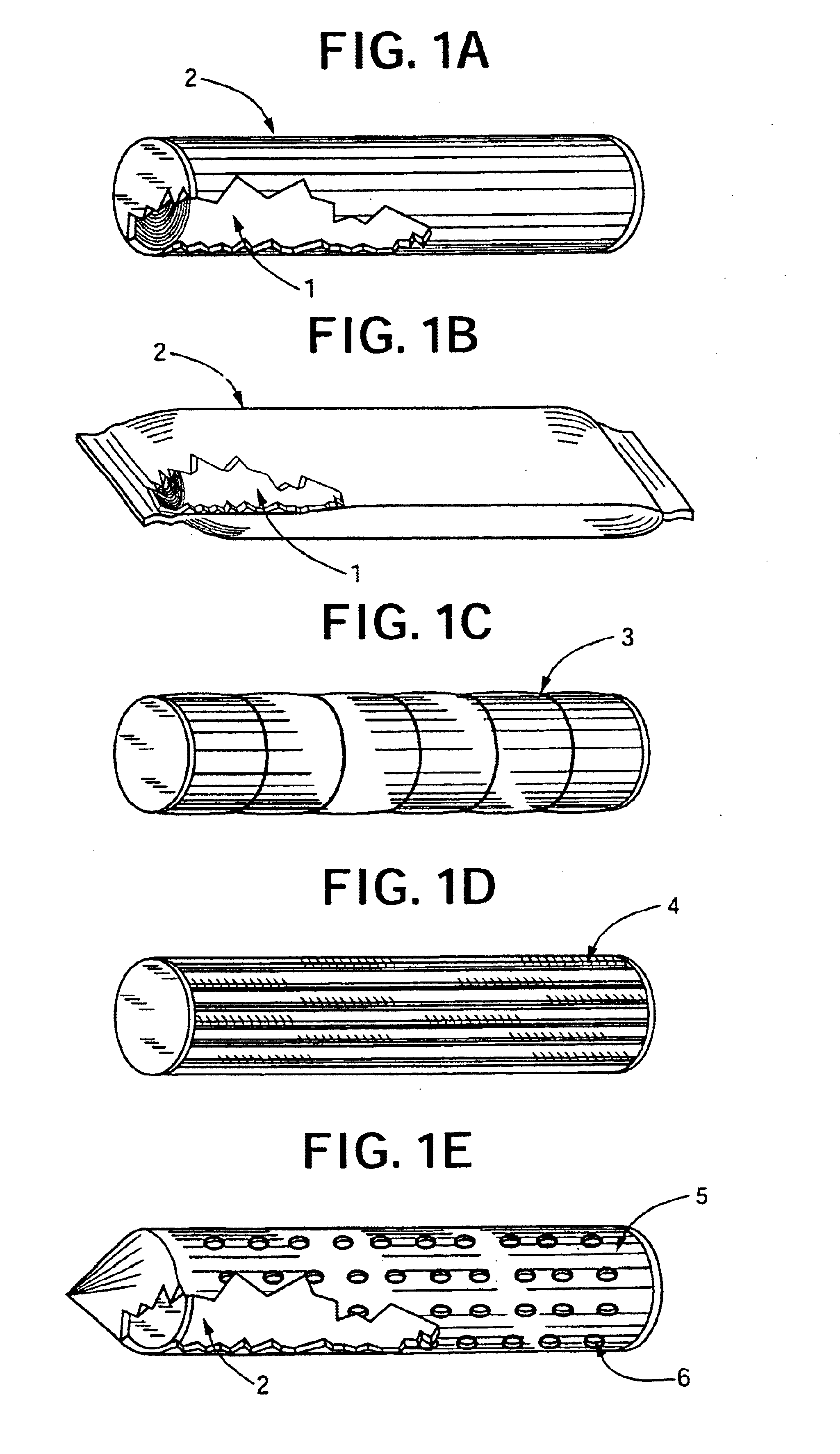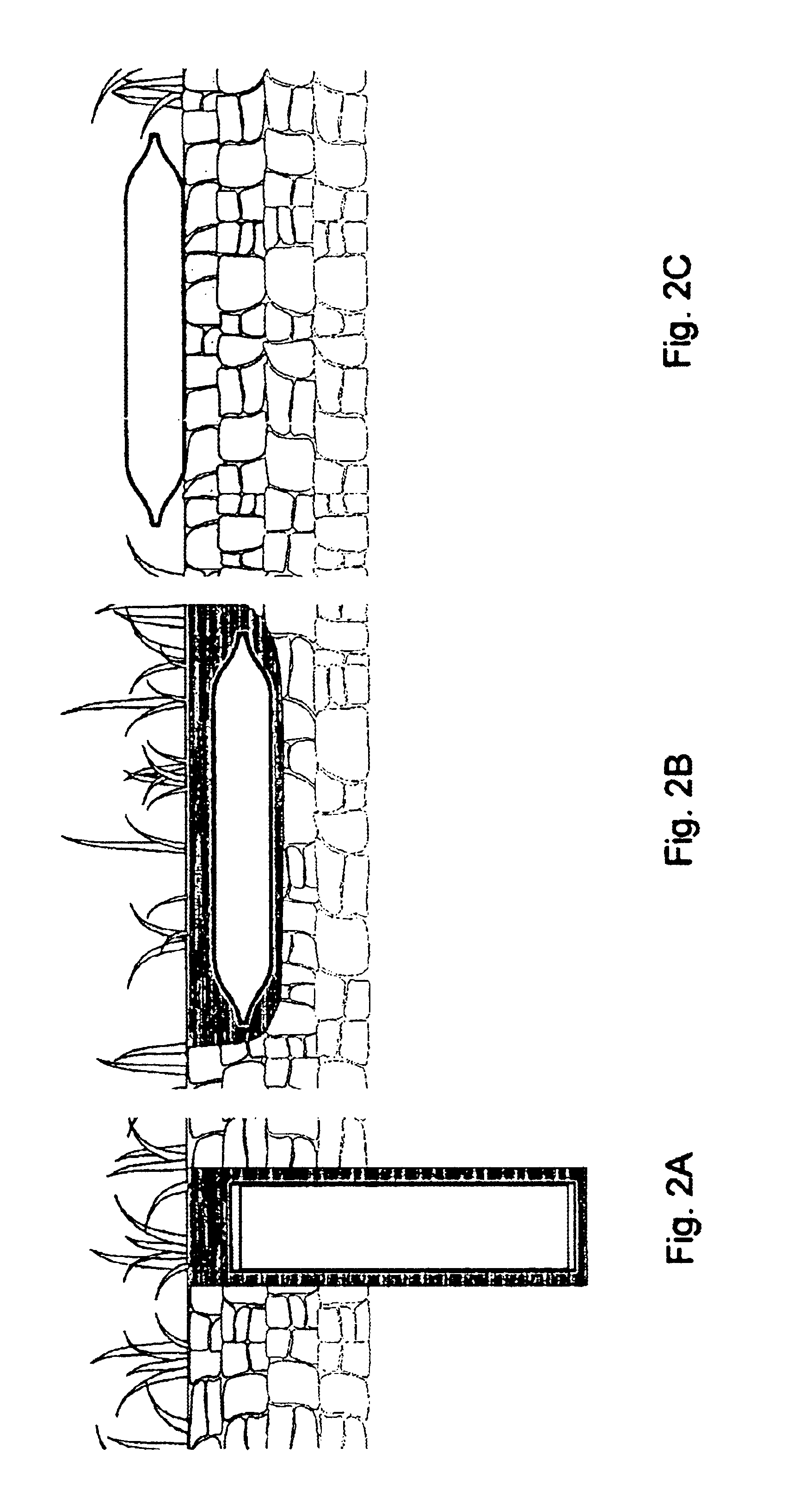Hermetically sealed baits for subterranean termites
- Summary
- Abstract
- Description
- Claims
- Application Information
AI Technical Summary
Benefits of technology
Problems solved by technology
Method used
Image
Examples
example 1
Durability Test
Twenty HS baits containing cellulose baits (similar to those shown in FIG. 1A, FIG. 3, and FIG. 4) were placed in soil for 12 months to test their durability. These HS baits were made from approximately 3 mm-thick sheets of closed-cell polyethylene sheets partially rolled to form hollow tubes having a diameter of approximately 3 centimeters and a length of approximately 20 centimeters. Toxicant bait as shown in FIG. 1A and FIG. 3 was placed in each tube. The seam of the polythene sheet and end plugs of the same polyethylene material were hot glued to seal the baits.
The test was conducted in soil under outdoor conditions in south Florida. There was no known termite activity in the soil for this test site. Ten wooden stakes were planted in the soil as a comparison. After 12 months exposure, HS baits were cut open to examine the status of the termite bait materials. In all cases, the cellulose bait material remained dry and intact (FIG. 3), while wooden stakes were badly...
example 2
Field Efficacy Test A
Residents of a single-family home noticed termites swarming from kitchen cabinets in the spring of two consecutive years (1996 and 1997). A close inspection uncovered further infestations of the subterranean termite, R. virginicus, in other wooden components of this house. Wooden stakes (1″×1.5″×12″) were placed in the soil in the backyard to detect termite activity. When survey stakes were infested by termites, underground monitoring stations similar to that described by Su & Scheffrahn (1986, Sociobiology 12:299-304) were installed. By the summer of 1997, termite activity was found in two monitor stations. Termite again swarmed in the kitchen in the spring of 1998. More stations were installed between then and the summer of 1999, but in all cases, termites did not return to the stations once they were opened for inspection. Similar observations were made in the infested wood in the house and in other wooden stakes in the soil; and termites did not return to th...
example 3
Field Efficacy Test B
Subterranean termite infestations and spring swarms were observed in a single family home for three years (1997-1999). Despite repeated soil treatments, termite activity persisted; the pest control firm under treatment contract suspected the presence of the Formosan subterranean termite, Coptotermes formosanus. A stake survey conducted in the summer of 1999 revealed high activity of the eastern subterranean termite, R. flavipes, but C. formosanus was not found in this site. In August 1999 two monitoring stations harbored termite activity; by October the number of active stations increased to five (FIG. 5A, EST1). This R. flavipes population maintained this level of activity throughout the winter of 1999 to the spring of 2000 during which another termite swarming was observed. On Mar. 1, 2000, 25 HS baits containing 0.5% hexaflumuron similar to FIG. 1C were installed in soil surrounding this house. By Apr. 17, 2000, termites collected from the five monitoring sta...
PUM
 Login to View More
Login to View More Abstract
Description
Claims
Application Information
 Login to View More
Login to View More - Generate Ideas
- Intellectual Property
- Life Sciences
- Materials
- Tech Scout
- Unparalleled Data Quality
- Higher Quality Content
- 60% Fewer Hallucinations
Browse by: Latest US Patents, China's latest patents, Technical Efficacy Thesaurus, Application Domain, Technology Topic, Popular Technical Reports.
© 2025 PatSnap. All rights reserved.Legal|Privacy policy|Modern Slavery Act Transparency Statement|Sitemap|About US| Contact US: help@patsnap.com



